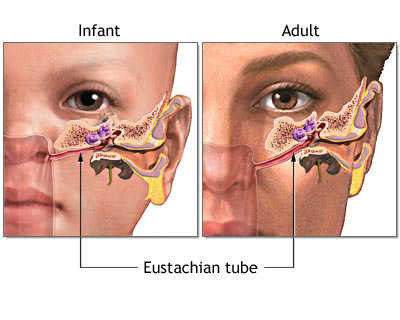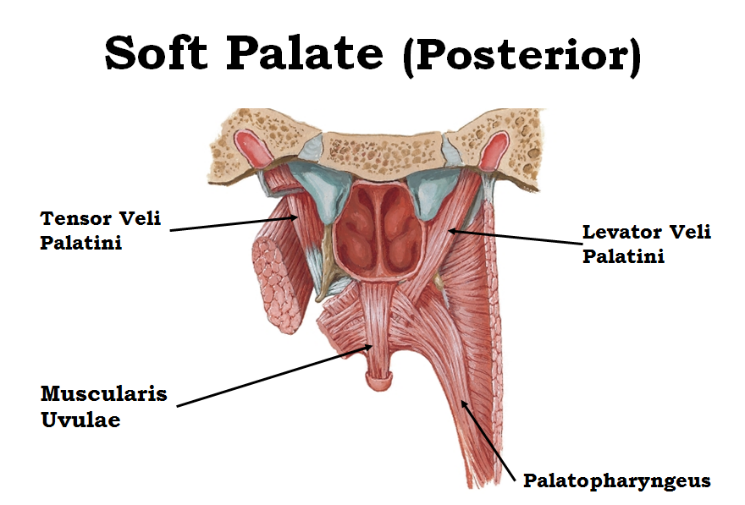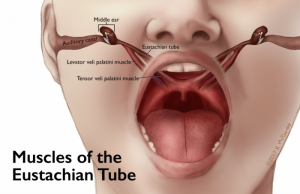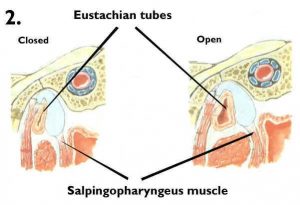4.1.4 What is the Eustachian Tube?

The Estachian tube is the pressure-equalizing tube, connecting the middle ear to the outside air pressure.
The Eustachian tube runs between the middle ear cavity and the back of the throat. It is normally closed but opens by muscular contraction when we yawn or swallow.
The tube is wider at the ends the narrower in the middle. It is a bony tube lined with cartilage and mucous glands. The upper end is lined with little hair cells which help to move fluid out of the middle ear.

Several muscles, which are closely connected with the hammer muscle, take the role of activating (opening and closing) the Eustachian tube. They do this by lifting the soft palate to open the throat.

Malfunction of these muscles can lead to chronic Eustachian tube dysfunction, which creates the experience of blocked ear.
The Eustachian tube links the back of the throat and the ear, allowing air in the middle ear to be equalized with the outside air pressure. Dysfunction of the Eustachian tube causes many common symptoms like blocked ear or pressure in the head, clicking, popping or painful ears. If pressure cannot be equalised, causing a sensation of fullness in the ears, this will also cause a temporary loss of hearing.
In children under seven, the Eustachian tube is almost horizontal, and this explains why children are so prone to ear infections. In adults the tube tilts to a 45° angle, making it easier for fluid to drain out of the ear. However various types of injury, or poor muscular function, can lead to chronic Eustachian tube problems.
Nerve supply
The function of the Eustachian tube plays an important role in aspects of our hearing and speech. When the Eustachian tube does not function normally it causes discomfort in a number of areas. It is supplied by multiple nerves, which may explain the potential for referred pain to other regions of the head and neck.
One of the supplying nerves is also involved in communications with the eardrum, the pressure system of the inner ear and the tongue.
Muscles of the Eustachian Tube
There are four muscles involved in the function of the Eustachian tube. These include the tensor veli palatini, levator veli palatini, salpingopharyngeus, and the tensor tympani. These muscles serve to support the tube, lift the soft palate, open the tube and balance the pressure on the eardrum.

Normal Function
The normal Eustachian tube is closed when it is at rest, with slight negative pressure (a gentle vacuum) present in the middle ear. It opens during swallowing, sneezing, and yawning.

The Eustachian tube has three functions: ventilation, drainage, and protection. When the tube is open it allows ventilation of the middle ear and equalization of pressure in the middle ear with atmospheric pressure. It also allows the middle ear to clear unwanted secretions. By staying closed as a general rule, it protects the middle ear from phlegm and other nose and throat secretions, as well as from the sound of chewing and other bodily functions.

